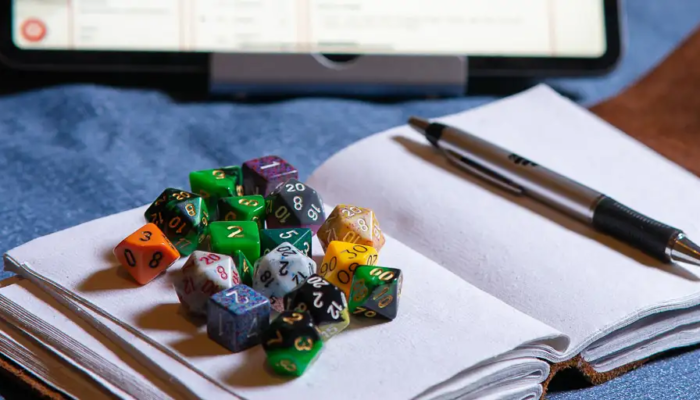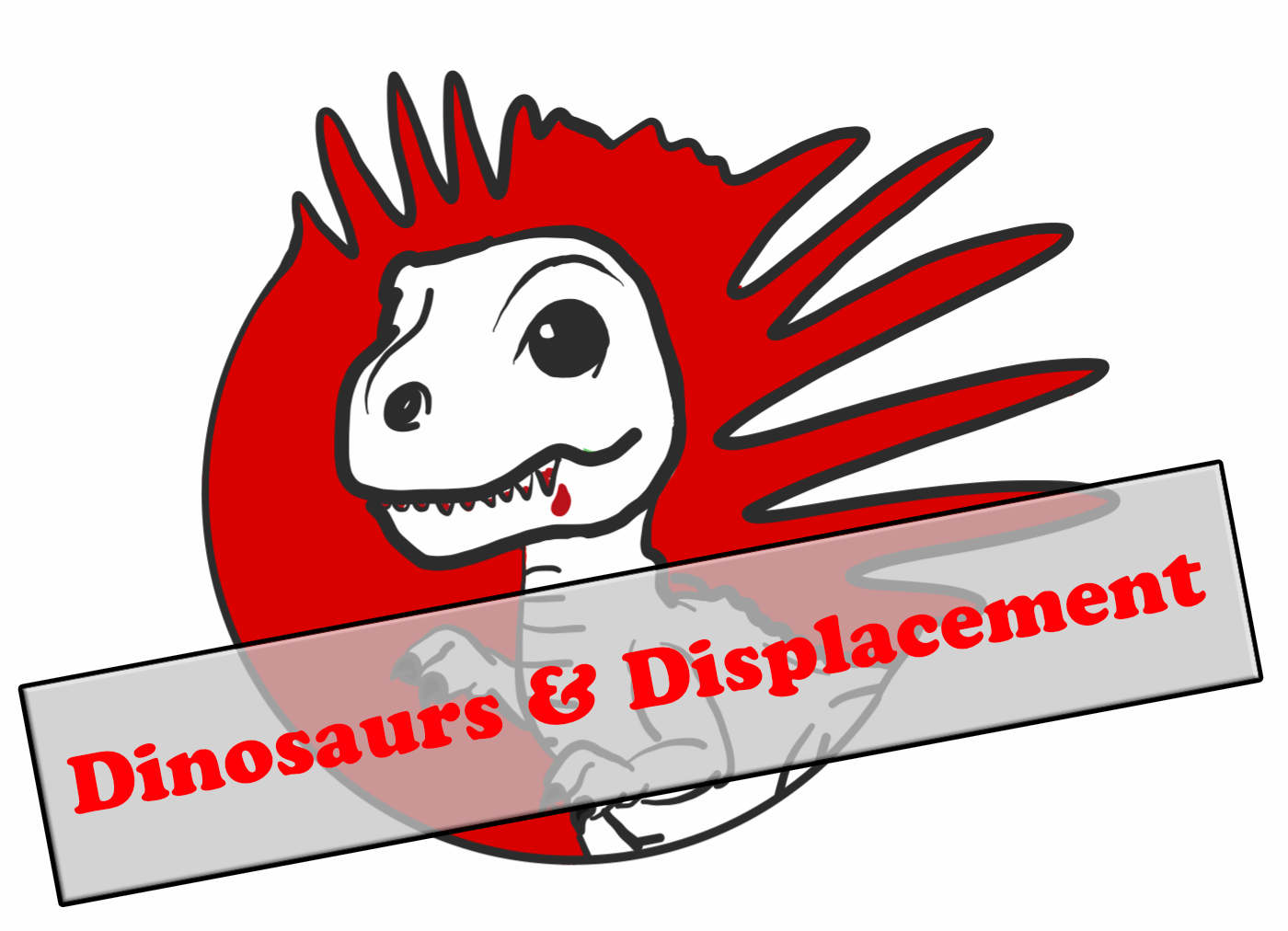
This week we’re looking back to a highlight of the Seismology team’s EGU21 output – Dinosaurs & Displacements! So if you’re watching the Dungeons & Dragons sessions in the new season of Stranger Things on Netflix, and think it could do with a big more geoscience, look no further than this blog by the Dungeon Masters Lars Gebraad and Maria Tsekhmistrenko…
It’s been a year of the new, the difficult, and the different. With most scientists working from home and most collaboration happening over mail, EGU21 was a welcome change for many. Seeing colleagues and old friends from around the world and engaging in science – it was two weeks that many of us enjoyed. In this spirit, the EGU Early Career Scientists representatives approached us to organize an evening of social gaming with a very classic pastime: Dungeons & Dragons (DnD).
For the people who are either too old or too young to know what this 4-decade old game is, ask your friends who were in high-school or college in the 70s to see if they remember this classic role-playing game (or watch Stranger Things and Big Bang Theory!) Dungeons & Dragons revolves around story-telling. There is no pre-determined script and no winning. It is a game where the players create a character that sets out in a fantasy world. And what this world throws at them is determined by the “Dungeon Master” (DM), an ominous-sounding term for a player who sits somewhere between referee and story writer. The DM makes up puzzles, encounters and battles to challenge the players in their journey through this fantasy world. DnD could be compared to watching a movie with your friends whilst you decide what your character does. There’s no obvious ‘winning’ other than collectively enjoying the story you craft. The game is classically played by friends gathering, typically once a week or on a one-off occasion, to further their shared tale. Players decide what actions to take, and the DM tells them if and how they succeed, based on the difficulty of what they try to achieve and randomized by a dice thrown by the players. “You want to climb this wall? Alright. The wall seems rather crooked and slippery. I will need you to roll higher than a 15 using your 20 sided die.”
With the advent of the modern internet, and successively more complex web-applications, many companies have sprung up to fulfil the demand of people who want to enjoy DnD with their friends around the world. These services typically provide things such as digitized rule books, shared online gameboards and die simulators. During the COVID-19 pandemic, many of the companies that provide these services saw their demand spike (https://www.latimes.com/california/story/2021-01-13/online-d-d-provides-relief-covid-19-pandemic, https://dnd.wizards.com/remote/freematerial). Millions of people found a fun hobby to enjoy with their seemingly far-removed friends. Originally developed as a tabletop fantasy game, it seems unlikely that the creators envisioned how DnD is currently enjoyed by so many physically isolated players.
The current pandemic also is what hooked us (the writers of this article) initially on the game, and what culminated in the first ever Seismology ECS-DnD session. The story that was told was that of the next physical EGU meeting in Vienna. After falling down a cavern created by a heavy earthquake, six early-career scientists and their DM set out to explore the fantastical hidden ruins of an ancient dwarven city hidden below the Austria Centre. Making their way past dangerous caves, abandoned dwellings of mystical creatures and the occasional forgotten (but-still-very-much-alive) dinosaur, they learned about the magical world. At the end of the journey, the fellowship awakened in the cellar of the classic Bermuda-Bräu left wondering if it was all a dream. The story we crafted together is influenced by all, not just the DM. Although the DM is pretty used to playing with an aggressive group of adventurers (“It moves? Quick! My bow!“), he was pleasantly surprised by the conflicts that were solved through more positive interactions. A few times, the players got hooked on something that you hadn’t even thought about, and you’re left improvising on the spot; “Yeah, uhhh, that glowy crystal might actually open this locked door!“. This all creates a very unique experience with every distinct group of players.
As mostly seismologists, our adventuring party ended up using seismic tremors (after a series of successful die throws) to plan their escape from a collapsing cave-system, in true Earth Science fashion. Our group of players was a mix between new explorers and seasoned swashbucklers. However, one requirement was that we tell our story in a single night. To this extent we modified the original rules of the game to be both simpler, and more relevant to academics that are part of EGU. This is why we ended up with a “hyper-functional elven PhD student” and a “reality-modelling android”! We think in the end, everyone got away from the current home-office stress and got to live their highest scientific ambition. 😉
Written by Maria Tsekhmistrenko & Lars Gebraad

